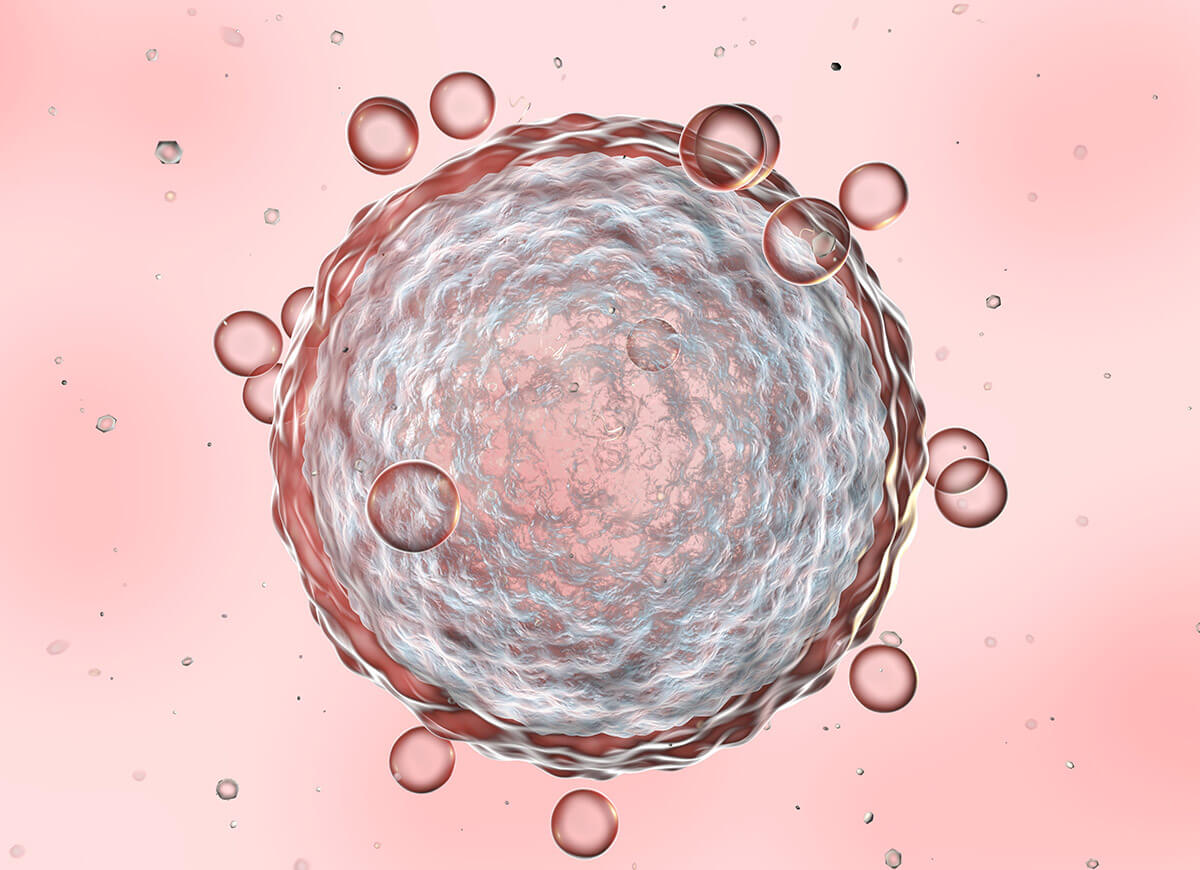Induced ovulation consists of using hormonal therapy to stimulate proper maturation of eggs in the ovaries. The goal of stimulation is to trigger the development of Graafian follicles, resulting in the production of many eggs in one menstrual cycle. Cycle stimulation is the first phase of in vitro fertilisation.
When to induce ovulation?
Indications for induced ovulation are associated with disturbed ovulation cycle. They include:
- irregular ovulation,
- absence of ovulation,
- disturbed development of Graafian follicles.
The goal of stimulation
Induction of ovulation is expected to result in a greater number of eggs compared to the natural cycle, when only one egg is produced. Ovarian stimulation usually helps to obtain five to ten gametes, which are used for in vitro fertilisation – a process which consists of combining eggs with sperm in a laboratory setting, and transferring them to the patient’s uterus.
The goal is achieved through the restoration of normal activity of female sex hormones.
What determines the effectiveness of induced ovulation?
Stimulation of ovulation is effective if the woman gets pregnant and gives birth to a child. The patient can also have influence on the final effect of the process. As is the case with natural conception, the chance of success is largely determined by a woman’s lifestyle. Therefore, after deciding to start stimulation of ovulation, the patient should remember to:
- normalise her body weight,
- follow a proper diet,
- give up stimulants,
- have an active lifestyle,
- stay positive and reduce stress.
Induction of ovulation – the procedure
Hormonal abnormalities contribute to up to 30% of cases of infertility, as adequate concentrations of hormones are of crucial importance for the proper function of the reproductive system. Ovulation is induced by pharmacological or hormonal stimulation of the ovaries.
Clomiphene citrate (Clomid)
Clostilbegyt is an oral medicine. It is inexpensive, and offers good effects. Positive response of the ovaries is obtained in 60-80% of cases. As many as seven out of ten pregnancies start in the first three cycles of therapy with this product.
Clostilbegyt is usually administered from the fifth to the ninth day of the cycle, and the dose is determined by the doctor, based on the patient’s individual needs; the standard dose is 50 to 250 mg daily. In the menstrual cycle when the patient is using the medicine, control ultrasound examinations and assessments of the cervical mucus are performed. These tests are to confirm the presence of ovulation, and evaluate the developing follicles.
Indications for the medicine include:
- irregular or absent ovulation,
- infertility of unknown origin,
- preparation of intrauterine insemination.
Gonadotropins
Gonadotropins are natural hormones produced during a normal cycle by the pituitary gland, hypothalamus and ovaries. They regulate the menstrual cycle.
- Follicular stimulating hormone (FHS) stimulates the growth of Graafian follicles.
- Luteinising hormone (LH) supports the transformation of Graafian follicles into corpora lutea.
Indications for a hormonal treatment include:
- failure of the therapy with Clostilbegyt,
- intrauterine insemination,
- in vitro fertilisation,
- ovulation disorders due to Gonadotropic hypogonadism, i.e. dysfunction of the ovaries that consists in failure to produce sex hormones or gametes.
Hormones are usually administered in the sixth, eighth and tenth day of the cycle. Hormone therapy starts with low doses that may be increased, if necessary. A typical initial dose is 75-150 units. This may be titrate, depending on the response of the organism which is monitored by ultrasound examination and assessment of blood estradiol concentration, as it determines the proper growth and function of the follicles. Hormone therapy induces ovulation is eighty percent of patients.
Monitoring of ovulation – what is it and what is its aim?
Cycle monitoring is performed to determine the optimal day for trying to conceive a child, when the chances of success are the highest.
What does ovulation monitoring involve?
Cycle monitoring involves the evaluation of the development of Graafian follicles, and assessment of the structure and thickness of endometrium, i.e. the uterine mucosa. Proper evaluation of the cycle preferably requires three visits during one cycle. What does the doctor assess when monitoring the menstrual cycle?
- Structure of the ovaries – it is assessed during period. The exam is conducted to exclude abnormalities, such as cysts.
- Growth of the Graafian follicles – in women with induced ovulation, their number is also determined.
- Rate of endometrial growth – adequate rate significantly affects the chances of successful conception.
How often should cycles by monitored?
Unfortunately, menstrual cycles may vary, and normal cycles may be followed by abnormal ones. Therefore, a single cycle assessment cannot determine the character of all cycles. To confirm the repeatability of normal cycles, ovulation should be monitored in a few cycles. If disorders are repeatedly observed, menstrual dysfunction may be considered as a possible cause of infertility.
